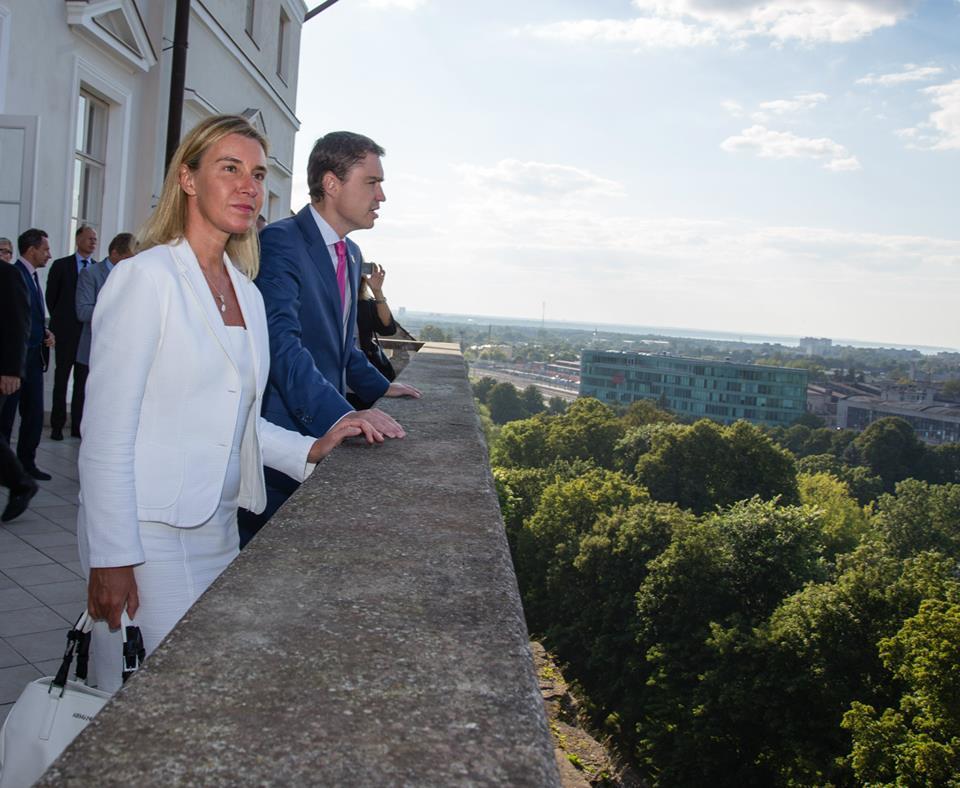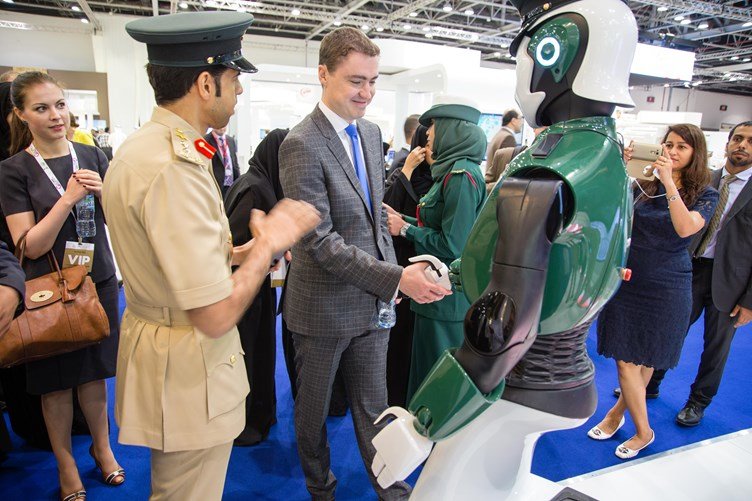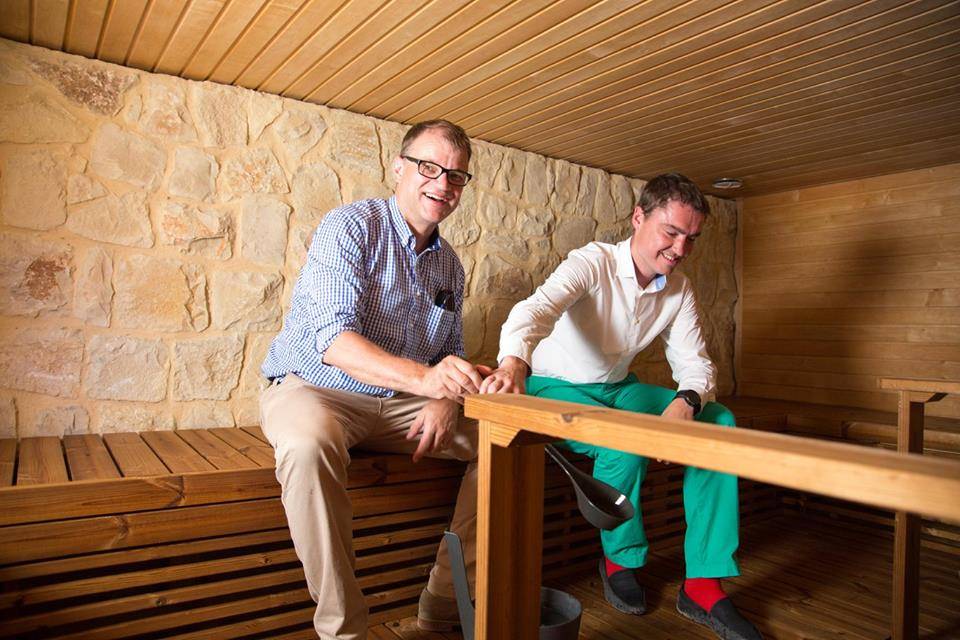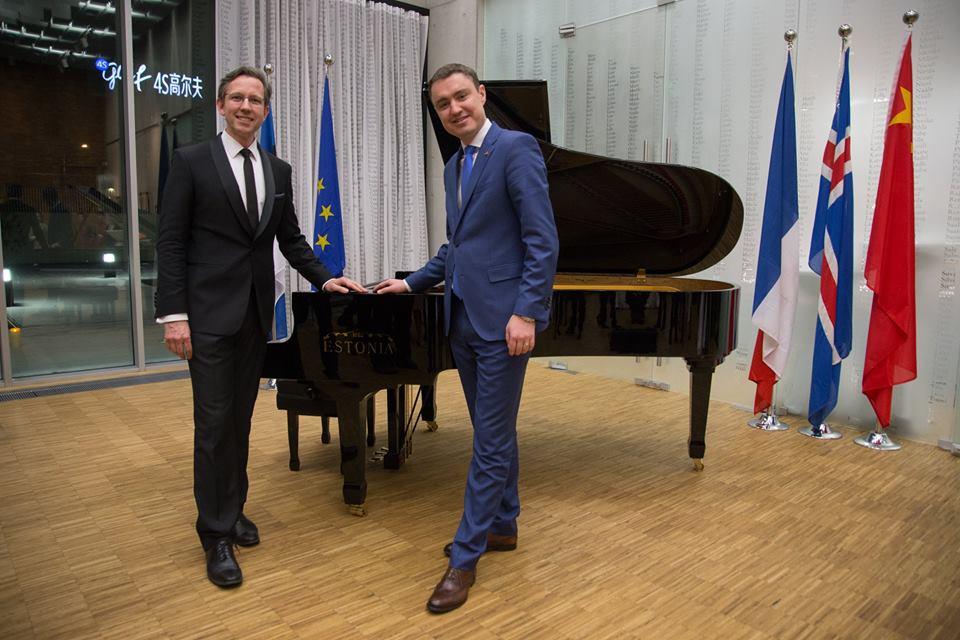“We don’t necessarily need a physical tunnel between Helsinki and Tallinn – time will show whether that will ever happen – but what we do need is a ‘mental tunnel’ at least, connecting the two countries by innovation and in cross-border digital solutions,” says Taavi Rõivas, Europe’s youngest prime minister.
He is making his pitch while looking out of the window of the Stenbock House, the elegant neo-classical home of the Estonian government on Toompea, in Tallinn’s Old Town.
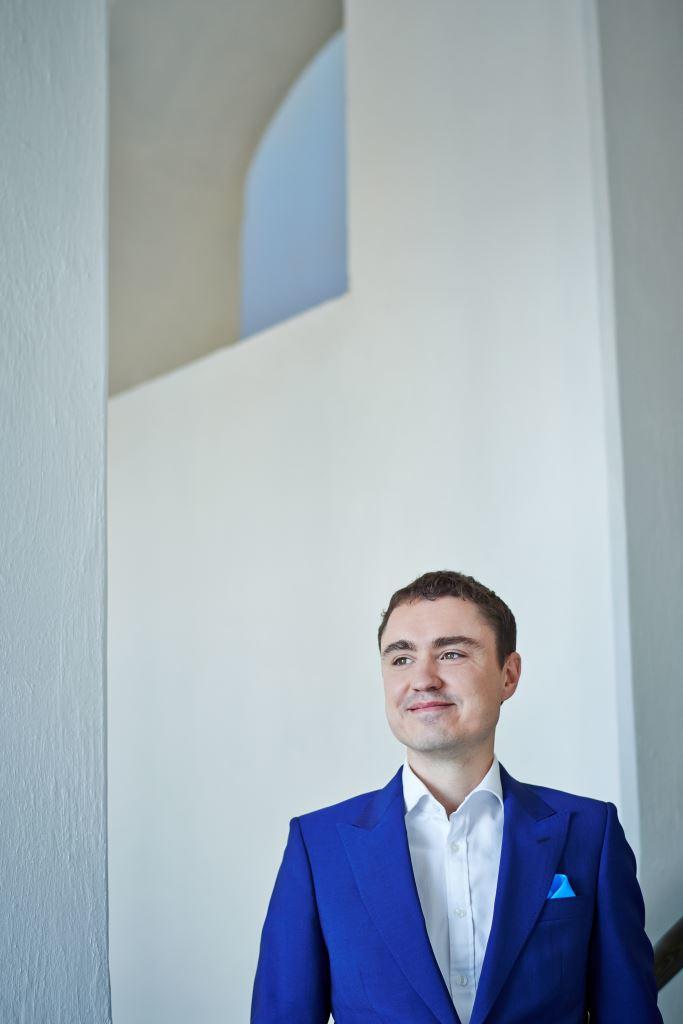 From his office, Rõivas can clearly see the Gulf of Finland; just 90 kilometres (56 miles) separate the two ethnically and linguistically close neighbours, and Sweden is less than 400 kilometres (249 miles) away, albeit in a different direction.
From his office, Rõivas can clearly see the Gulf of Finland; just 90 kilometres (56 miles) separate the two ethnically and linguistically close neighbours, and Sweden is less than 400 kilometres (249 miles) away, albeit in a different direction.
History has been slightly kinder to Finland than to Estonia, having spared it from the Soviet occupation, but Estonia has made an enormous effort since regaining independence 24 years ago and, in many areas, such as good governance, low corruption levels and the rule of law, has caught up with its Northern neighbour. In fact, in some spheres – such as digital solutions – Estonia is actually leading the Nordic pack.
Estonia has not quite caught up with the Nordic countries in living standards and wealth yet, however, although even here, massive progress has been made as well: whereas in 1995, Finland’s GDP per capita was almost nine times higher than Estonia’s, it is just 2.5 times higher today.
Rõivas, who has been in politics since the late 1990s and seen most of the progress made in Estonia at first hand, is now determined to close this gap further. His solution? Estonia as a “new Nordic” country – rigid in foundation, but flexible in solutions, especially in its approach of embracing new technologies.
E-politician from e-Estonia
Taavi Rõivas became prime minister of Estonia in March 2014, but before that he had held several senior positions over several years. Having joined the Reform Party at the age of 19 in 1998, his political career began as an advisor to the minister of justice a year later, a position he held for three years.
He was subsequently elected to parliament where he was chairman of the European Union Affairs Committee and a member of the Finance Committee. Before taking over from Andrus Ansip as prime minister, Rõivas served as the minister of social affairs, where he was responsible for introducing the work ability reform which aims to find employment for people with special needs.
As with most Estonians of his generation, by the 1990s the computers and IT was in everyday use for the young prime minister.
“I started using a PC at my dad’s office, but I do remember my very own first computer, which was Pentium 486, bought in 1994 and which at that time cost a couple of month’s wages – an absolutely astronomical amount!” Rõivas recalls.
It wasn’t long after that the Tiger’s Leap project was undertaken by Estonia to heavily invest in development and expansion of computer and network infrastructure in Estonia, with a particular emphasis on education – the starting point of e-Estonia.
Rõivas joined the political establishment soon afterwards, just at the time when the modern foundations for the infrastructure of Estonian digital society were laid.
“The fundamental starting point of Estonia’s emergence as one of the most advanced e-societies in the world was not based as much on the technological decision, but rather on a political commitment – based on decisions taken in the late 1990s, when it was determined that all people in Estonia will have secure access to all the e-services where their online identity equals with a signature on paper,” Rõivas says, recalling the time when Estonia passed the law giving electronic signatures the same legal weight as traditional signatures.
“It was all very innovative at the time – the change in the mindset that signatures do not have to be painted on paper by pens, but you can do it online.”
“As of now, every third person in Estonia votes online, without needing to go to a polling station.”
He also recalls being a member of the working group under the ministry of justice in 2000, which was investigating the possibility of whether people could vote via the internet.
 “I was 21 at the time and I remember how the foreign media outlets started ringing us to find out whether it would be possible. We believed we could do it and create the necessary framework for it. Admittedly, it took us another five years, but by the time it was ready, Estonia became the first country in the world where people could vote online. As of now, every third person in Estonia votes online, without needing to go to a polling station. Again, this was fundamentally based on the decision to provide people with a secure online identity,” Rõivas says.
“I was 21 at the time and I remember how the foreign media outlets started ringing us to find out whether it would be possible. We believed we could do it and create the necessary framework for it. Admittedly, it took us another five years, but by the time it was ready, Estonia became the first country in the world where people could vote online. As of now, every third person in Estonia votes online, without needing to go to a polling station. Again, this was fundamentally based on the decision to provide people with a secure online identity,” Rõivas says.
The words, “secure online identity”, are repeatedly emphasised by Rõivas, who often finds himself reassuring other foreign leaders on the subject when they visit Estonia and are given a brief on the country’s digital advancements; while Estonia is years ahead on this, most of the European countries are still contemplating whether to implement e-signatures or online voting.
“Our system is absolutely secure – it gives 100 per cent guarantee that the person who logs in is who he or she claims to be,” Rõivas says convincingly, while talking about the backbone of Estonian e-services – the national ID card. The ID card carries embedded files which, using 2,048-bit public key encryption, enable it to be used as definitive proof of ID in an electronic environment.
First cross-border digital exchange
One of the prime examples Rõivas likes to bring out with foreign dignitaries while talking about e-Estonia is the e-health structure – a nationwide system which integrates data from Estonia’s different healthcare providers to create a common record for each patient, and which allows doctors to access a patient’s records easily from a single electronic file.
The doctors can read test results as soon as they are entered, including image files such as X-rays, and in an emergency situation, can use a patient’s ID card to read time-critical information, such as blood group, allergies, recent treatments, ongoing medication or pregnancy, while patients have access to their own records, as well as those of their children.
“When president Obama visited Estonia in 2014, he said that he should have called Estonia when setting up the US health-care website.”
“When president Obama visited Estonia in 2014, he said that he should have called Estonia when setting up the US health-care website. I actually believe that he meant it seriously. Our digital health records are more secure than keeping them in paper form would be. Take, for example, Michael Schumacher’s case, whose medical records were stolen and then leaked after the terrible accident that happened to him. Something like this would not be possible in Estonia and I have also made this clear to my foreign colleagues,” Rõivas explains, adding that the phenomenon has indeed sparked interest from others – Finland is expected to follow Estonia’s suit soon and start using a similar model.
Rõivas adds that this is where the cross-border digital solutions also come handy.
“Those Finnish pensioners who have holiday homes in Estonia might be interested that if a Finnish doctor prescribes medication in Finland, they could pick up their medicine in Estonia, removing the need to go back home to collect it,” he says, characterising the distinguished ties between the two friendly countries.
It all comes down to a clear political leadership when implementing these solutions, Rõivas underlines.
While some sceptics have expressed opinions that the IT-tiger of Estonia might have become sleepier in recent years, the young and energetic PM disagrees and doesn’t worry that the world will get tired of Estonian e-story or catch up and even leave it behind.
“Estonia has done it on a level that no other country has before, which is why other countries are still interested of Estonian digital success stories. Technologically speaking, most can do it – if not, they can find IT firms in Estonia who will help them – but it is more difficult for others to reach a political consensus that provides an environment for various e-services and which is not easy to come in many countries. There is still mistrust surrounding using online signatures, for example,” Rõivas says.
The prime minister is confident that Estonia is far ahead with its digital formula. Yet, he emphasises that others do not need to invent the wheel again – Estonia has already introduced many IT innovations and others can imitate this with ease.
“It would be good for us if a large European country started using the IT-solutions we implemented. We already have the experience and therefore we have the confidence to try new ways and take the existing ones to new level. As for resources, there are many countries which have more money than Estonia and which can invest in e-solutions. But if they use this money to create hundreds of different systems that don’t comply with each other, it will be less effective than using a hundred times less money and creating one effective system – as has been the case in Estonia. We do not need to be ashamed – Estonian e-solutions are unique in the world,” he says.
The first Nordic cross-border IT-cooperation is already in place – Finland and Estonia will adopt the latest version of the Estonian-created data exchange layer X-Road, thus becoming the first two nations in Europe to develop a joint data exchange platform to make digital services mutually accessible for their inhabitants.
The future of e-Estonia
The Finnish-Estonian data exchange is the first time that another country has based its e-state infrastructure on a solution developed in Estonia, but Rõivas hopes that it will not be last.
“The sky is the limit now. Everything is possible because the infrastructure behind Estonian information society e-services allows linking various e-service databases, both in the public and private sector, it is an open solution. Estonian e-solutions are unique in the world,” he says, rejecting any suggestion that the “tiger” is sleeping.
Rõivas says that the Estonian national digital agenda spells out a package of next policy initiatives, from leading the development of cross-border digital public services – such as the one just introduced with Finland – and infrastructure to thorough redesign of many digital services towards greater user focus.
“The sky is the limit now. Everything is possible because the infrastructure behind Estonian information society e-services allows linking various e-service databases, both in the public and private sector, it is an open solution.”
“We have to further develop our services, such as e-health, e-police, e-social services. There are many new steps to take – plus, we have to be sure that our e-services correspond not only to present challenges, but also that may arise in future – we have to be many steps ahead,” he goes on.
One of the latest developments is a state-run, startup Estonian e-residency – a state-issued, secure digital identity for non-residents which allows digital authentication and the digital signing of documents – thus moving clearly towards the idea of a country without borders. Rõivas says that almost double the initial estimated amount of people have signed up to become e-residents of Estonia since the program’s launch at the end of 2014.
The new Nordic
Clearly appreciating the Nordic neighbourhood, Rõivas highlights the many similarities between Estonia and its Scandinavian neighbours, but he also identifies a few differences.
“The Nordic countries are based on fundamentally strong values and are also very innovative. There is a certain rational attitude – and this is where Estonia definitely shares their values. But where we would like to do things a little bit differently or even better is to achieve an environment where our entrepreneurial culture is stronger and tax policies more flexible, than is generally the case in the other Nordics,” he says.
“We have not achieved the same living standard as the Nordic countries yet. Hence we have to try harder and our economic growth has to be concomitantly higher.”
“We have a very good reason why we need to find solutions where we need to be more innovative – we have not achieved the same living standard as the Nordic countries yet. Hence we have to try harder and our economic growth has to be concomitantly higher. But I believe that we can definitely achieve this,” the prime minister optimistically states.
Rõivas says there are a few advantages already that may help Estonia to catch up soon:
“Estonia has for over 20 years conducted a very conservative budget policy – our public debt is the lowest in Europe. This is why we don’t need to put any pressure on companies, to tax them heavily – Estonia also has a long-standing system of low, simple, flat-rate taxes – and can invest more money into society instead. If we add here as little bureaucracy as possible to make the business environment as attractive as possible, the result is likely to be not bad at all,” he says.
He also stresses the importance of education where Estonia’s skills clearly qualify it as a Nordic country: “Where Nordic countries are also very strong is in education. And I’m glad that Estonia is also doing very well on this front, as the PISA tests show – for example, Estonian 15-year-olds rank second behind only Finland, and 12th out of 44 countries worldwide in problem-solving skills,” Rõivas says.
Governing over a country where kids start learning to code at the age of seven, the prime minister says more resources will be invested into IT-education: “Using computer before starting school will be as elementary as it was for us to know how to read or write before going to the first class.”
“Where Nordic countries are also very strong is in education. And I’m glad that Estonia is also doing very well on this front, as the PISA tests show.”
But catching up with Scandinavia does not necessarily mean adopting Nordic-style welfare state, according to Rõivas. “There must be social justice, but Estonia cannot afford to be a country that is like a welfare state from the 20th century. The modern welfare state makes sure that everyone has fair chances. The help does not necessarily need to be in the form of financial support – it can provide opportunities instead – such as the case with Estonian work ability reform.”
“There must be social justice, but Estonia cannot afford to be a country that is like a welfare state from the 20th century. The modern welfare state makes sure that everyone has fair chances.”
Rõivas is furthermore confident that 15 years from now, Estonia will have caught up with the Nordic countries completely. He says that his belief is based on the fact that Estonian society is built on solid foundation, with clear rules and business culture, topped up with forward-looking innovation.
“In 2030, Estonia will be as safe and well protected, not to mention as wealthy as the Nordic countries, but even more innovative and flexible. This ‘new Nordic country’ does not need to copy the other Nordic countries in everything. If we can be more open to new technologies as well as being more innovative – to be a test platform for new technological solutions, for example – then it is realistic that we catch up with the Scandinavian countries in wealth, too.”
I
The article was originally published in print magazine Life in Estonia. Cover: Taavi Rõivas.




